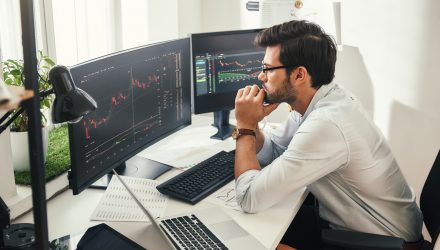With stocks tanking on the last day of the month over worsening fears that the deadly coronavirus will disrupt the global economy, a veteran market indicator that was signaling a positive year has now reversed its course.
The saying goes: As goes January, so goes the year, a widely observed “January barometer” and phenonmenon that suggests a correlation between January’s performance and full-year returns.
Looking as far back as 1950, when the S&P 500 was positive in January, 86% of the time the full year returns close up, with only 10 major aberrations through 2019, according to the Stock Trader’s Almanac, which identified the seasonal signal.
The track record is even more reliable during presidential election years. Since 1928, when January is up in an election year, the year is up 100% of the time with an average S&P 500 return of 16.6%, according to Bank of America.
But this year is full of disruptions. In addition to the coronavirus, there are also impeachment proceedings, an overbought, late cycle stock market, and poor fundamental growth.
“Uncertainty is never great for stocks, but when it involves the lives of many, many people, it’s impossible to know just what kind of problems this uncertainty will eventually create,” Matt Maley, chief market strategist at Miller Tabak, said in a note.
Despite strong moves from Amazon on Friday, which crested $1 trillion in market value, Ilya Feygin, senior strategist at WallachBeth Capital, noted that traders were exiting equity positions added on Thursday and in overnight futures trading after the World Health Organization didn’t advocate travel restrictions on China.
Now “there’s fear going into the weekend,” Feygin added. “The theme coming into this year was the Fed and Trump are going to bail us out of any problems, but the virus is something neither one can do anything about. That’s a reason to become more fearful.”
The coronavirus threat could worsen before it improved explained another medical expert.
“This is a very serious public health situation,” said Dr. Nancy Messonnier, director of the National Center for Immunization and Respiratory Diseases. “Moving forward, we can expect to see more cases, and more cases means more potential for person-to-person spread.”
With all this uncertainty, investors are running for safety, piling into gold and bonds, or just sitting in cash. Gold has rallied nearly 4% in January, while stocks have given back all their gains and then some. In additoin, a lack of clarity on the election outcome could be impeding markets.
“Elevated policy uncertainty usually leads to lower equity valuations and higher implied volatility in the months ahead of Election Day,” Ben Snider, Goldman Sachs equity strategist, said in a note. “The wide range of the various candidates’ policy views and the narrow range of polling and prediction market data indicate a particularly uncertain environment this year.”
Of course after such a historic run, it wouldn’t be out of the ordinary for the markets to have some sort of correction. Stocks had pulled back less than 3% since October, continuing to rally higher into the holiday season and end of 2019. This has led to a euphoric state for many investors, who were once on the fence as this market moved higher without them. As has proven historically true, now perhaps the latecomers may be punished.
For investors looking at how to protect portfolios during times of market declines could consider an ETF like the AGFiQ US Market Neutral Anti-Beta Fund (BTAL), which in general, is inversely correlated with baskets of stocks like the S&P 500.
For more market trends, visit ETF Trends.
